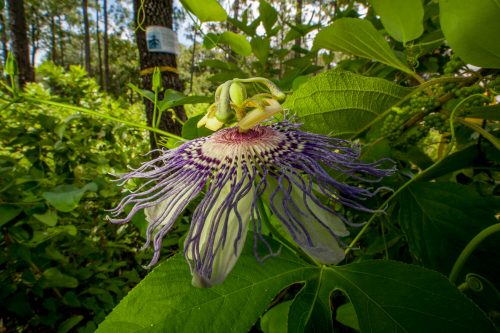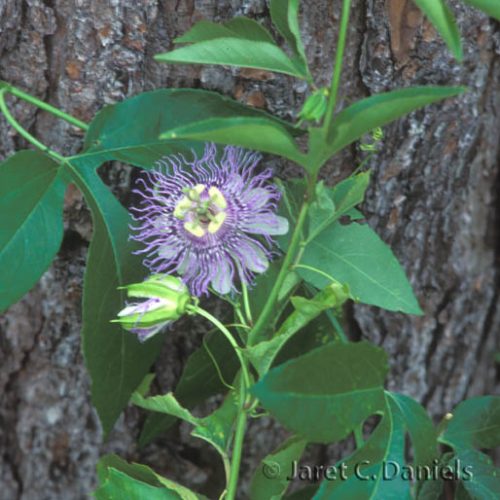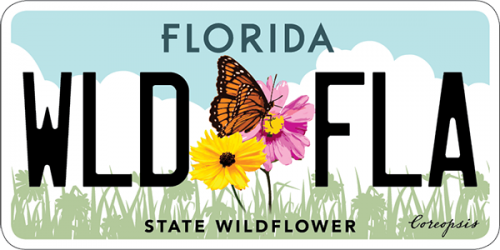
- Family name: Passifloraceae
- Host plant for: Zebra Longwing (Heliconius charitonius); Gulf Fritillary (Agraulis vanillae); Variegated Fritillary (Euptioeta claudia)
- General description: Robust prostate or climbing vine with alternate, three-lobed leaves, large, showy lavender flowers and round edible fruit. Dies back to the ground in central and north Florida. Easy to grow and virtually maintenance-free once established. Ideal for home gardens. Suckers aggressively and can spread rapidly. May require pruning to control in small gardens. Plant in full sun to partial shade in well-drained, rich soil. Versatile growth habit. Can be trained to climb or used as a ground cover. One of the premier larval host plants for any butterfly garden. Flowers attract bees and other pollinators.

- Type: Herbaceous perennial vine
- Flower: Showy, 3-inch-wide, intricate, lavender flowers
- Bloom time: Spring through fall
- Soil type: Moist, rich, well-drained soils
- Maximum height: Vine spreading to 10 feet or more, climbing fences and low vegetation
- Candidate for home gardens: Easy to grow, showy, attractive larval host plant
- Availability in nursery: Occasional, limited more to specialty and native plant nurseries
- Frequency in the wild: Common
- Habitat: hardwood forests, ruderal
- Range in Florida
 The Florida Wildflowers & Butterflies projects at the Florida Museum are sponsored in part by the State of Florida and the Florida Wildflower Foundation, Inc.
The Florida Wildflowers & Butterflies projects at the Florida Museum are sponsored in part by the State of Florida and the Florida Wildflower Foundation, Inc.